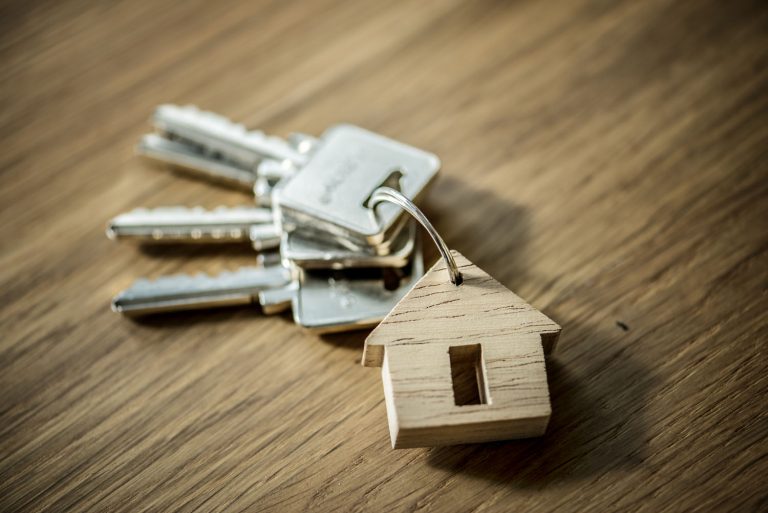Introduction: Navigating the Sale of Your Home During Divorce
Divorce is a challenging and emotionally taxing experience, and when the family home is involved, the process can become even more complex. Deciding to sell your house during a divorce is a significant decision that requires careful consideration of legal, financial, and emotional factors. Whether you’re looking to move forward independently or seeking a fair division of assets, understanding your options and rights is crucial.
In this guide, we’ll explore the essential steps to take when selling your home during a divorce, including valuation methods, legal considerations, and strategies for a smooth and equitable sale.
Part 1: Understanding Property Valuation and Appraisal Methods
One of the first steps in selling your home during a divorce is determining its value. Accurate property valuation ensures that both parties receive a fair share of the proceeds and can help prevent disputes later in the process.
The Difference Between Property Valuations and Appraisals
- Appraisals: Conducted by estate agents, appraisals provide an estimate of your home’s market value based on factors like location and recent sales of similar properties. They may also offer advice on potential improvements to increase value.
- Valuations: Performed by surveyors, valuations assess the property’s condition, identifying structural issues or defects. This information is vital for potential buyers and can help you address any problems before listing the property.
Common Appraisal Methods
- Comparative Market Analysis (CMA): This method compares your property to similar homes recently sold in your area. It considers features like location, size, and condition to estimate a fair market value.
- Income Approach: Often used for investment properties, this approach estimates the property’s value based on its potential to generate rental income. It’s less common for primary residences but can be relevant in certain situations.
- Cost Approach: This method calculates the cost to replace the property, accounting for land value, construction costs, and depreciation. While it can provide a baseline value, it may not always reflect current market conditions.
Importance of Accurate Valuation
Obtaining accurate valuations from multiple sources can help ensure a fair division of assets. Discrepancies between valuations can lead to disagreements, so it’s essential to approach this step with transparency and cooperation.
Part 2: Legal Considerations and Practical Steps When Selling a Home During Divorce
Selling a property during a divorce is rarely just a matter of putting up a “For Sale” sign. The process involves legal, financial, and emotional complexities that require careful planning and consideration. Missteps can lead to delays, disputes, or even financial losses, which is why understanding your rights and responsibilities is critical.
In this section, we will delve deeply into:
- Legal ownership and decision-making.
- Mortgage and financial considerations.
- Handling disagreements between co-owners.
- Options for selling efficiently while minimizing conflict.
1. Understanding Legal Ownership of the Property
The first step is to determine who legally owns the property. Ownership impacts who can make decisions about the sale and how proceeds are divided.
- Joint Tenancy vs. Tenancy in Common:
- Joint tenants have equal ownership of the property. The sale proceeds are typically split 50/50 unless otherwise agreed.
- Tenants in common may hold unequal shares of the property. For instance, one spouse may own 60% while the other owns 40%. Understanding these arrangements is crucial because it affects how the sale proceeds are divided.
- Legal Title and Consent:
Even if one partner primarily lives in the property or pays the mortgage, both owners usually need to consent to the sale. If consent is withheld, legal intervention may be necessary, which can delay the sale significantly. - Court Orders and Mediation:
In some cases, the court may become involved to ensure a fair division of assets. Mediation is often recommended to resolve disputes amicably, saving time, legal fees, and emotional stress.
2. Mortgage and Financial Implications
Divorcing homeowners must also consider mortgage obligations. If the property is jointly mortgaged, both parties remain liable to the lender until the mortgage is fully repaid or transferred.
- Paying off the mortgage: Proceeds from the sale are usually used to settle any outstanding mortgage before distributing the remaining funds between ex-spouses.
- Mortgage transfer or buyout: Sometimes, one partner may wish to keep the home. In such cases, they might need to refinance the mortgage in their name only, which requires lender approval and proof of financial capability.
- Costs of selling: Don’t overlook the practical costs involved in selling a property, including estate agent fees, solicitor fees, conveyancing, and potential home improvements. These costs must be factored into the calculation of net proceeds.
A clear financial plan, developed with input from legal or financial advisors, ensures that the sale process avoids unnecessary surprises or conflicts.
3. Handling Disagreements Between Co-Owners
Disagreements are common during divorce, especially regarding:
- Sale price expectations: One partner may want to wait for a higher price, while the other seeks a fast sale.
- Timing of sale: Emotional factors can influence decisions, with some individuals wanting to sell quickly to move on, while others prefer to delay.
- Property condition and improvements: Decisions about renovations or repairs prior to sale can also be contentious.
Strategies to minimize conflict include:
- Open communication: Regular, honest discussions about goals, timelines, and expectations.
- Professional advice: Solicitors, financial advisors, and mediators can provide neutral guidance.
- Third-party valuation: Independent valuations ensure fairness and reduce disputes over price expectations.
- Written agreements: Documenting decisions regarding timing, costs, and distribution of proceeds protects both parties and prevents misunderstandings.
4. Options for Selling During Divorce
When it comes to selling, divorcing homeowners typically have several paths:
a) Traditional Estate Agent Sale
Listing the property on the open market through an estate agent can be effective, but it comes with risks and potential delays:
- Time on the market can be unpredictable.
- Offers may be lower than expected, especially if buyers anticipate negotiation due to a “divorce sale.”
- Negotiations may create stress or further disagreements between ex-partners.
b) Auction
Selling at auction offers speed and certainty, but often at a lower price. Auctions are ideal for those who prioritize quick completion over maximum profit.
c) Direct Sale to a Cash Buyer (e.g., SellTo)
Selling to a professional buyer like SellTo has distinct advantages for divorcing homeowners:
- Speed: Completion in weeks, not months, reducing ongoing financial and emotional strain.
- Certainty: No risk of offers falling through due to financing issues or buyer withdrawal.
- As-is purchase: No costly repairs or staging needed, simplifying the process.
- Neutral solution: Avoids disagreements over market timing or pricing, providing a clean break for both parties.
This approach is often the most practical, particularly for motivated sellers who want to minimise stress, costs, and delays during an already challenging time.
5. Emotional Considerations
Divorce is not just a financial transaction—it’s also an emotional journey. Selling a home that holds memories can be difficult.
- Acknowledging emotions: Allow time for both parties to process feelings associated with leaving the home.
- Practical separation: Removing personal belongings, depersonalizing the property, and presenting it neutrally can reduce tension during viewings.
- Focus on resolution: Keeping the ultimate goal in mind—a fair, efficient sale—can help both parties stay pragmatic.
By addressing both practical and emotional aspects, homeowners can navigate the sale with clarity, fairness, and less stress.
Closing Thoughts on Part 2
Selling a property during a divorce is inherently complex, blending legal, financial, and emotional challenges. By understanding ownership rights, managing mortgages, handling disagreements constructively, and choosing the right selling method, homeowners can achieve a smooth and equitable sale.
Part 3: Preparing Your Home for Sale During Divorce – Staging, Presentation, and Maximizing Value
Once the legal, financial, and emotional aspects of a divorce-related property sale are understood, the next crucial step is preparing the home itself. How a property is presented can dramatically impact both the speed of the sale and the final sale price. Buyers respond to first impressions, and even a property with strong fundamentals may underperform in the market if it is not presented effectively.
In this section, we will explore:
- Practical steps to stage your home for maximum appeal.
- Decluttering and depersonalizing strategies.
- Enhancing both interior and exterior spaces.
- How presentation can influence buyer psychology and drive higher offers.
1. Decluttering and Depersonalizing
The first step in preparing a property is creating a neutral, inviting environment. This allows potential buyers to envision themselves in the space, rather than being distracted by personal belongings or clutter.
Key strategies include:
- Remove personal items: Family photos, collectibles, and personal memorabilia should be taken down. Buyers need to picture their own lives in the home.
- Organize storage spaces: Clean, tidy cupboards, closets, and pantries make the property appear well-maintained and spacious. Buyers often look for ample storage, and cluttered spaces can give the impression of insufficient storage.
- Minimize furniture: Excess furniture can make rooms feel cramped. Keeping only essential pieces helps highlight the room’s size and functionality.
A well-depersonalized, uncluttered property feels open, fresh, and move-in ready, which is especially important during divorce sales, where buyers may be cautious about negotiating over perceived imperfections.
2. Deep Cleaning and Maintenance
Cleanliness is a critical factor that influences buyer perceptions. Even minor dirt or neglect can signal larger underlying issues, deterring potential buyers.
Steps to ensure the home is spotless include:
- Professional deep cleaning: Consider hiring cleaners to address carpets, windows, bathrooms, and kitchens thoroughly.
- Address minor repairs: Fix leaky taps, squeaky doors, broken handles, and chipped paint. Buyers may deduct perceived repair costs from their offer if issues are left unattended.
- Exterior maintenance: Mow lawns, trim hedges, clean gutters, and pressure-wash driveways or patios. A neat exterior boosts curb appeal and creates a positive first impression.
Homes that appear well-maintained encourage buyers to feel confident in their offer, knowing they are purchasing a property in good condition.
3. Staging Rooms for Maximum Impact
Home staging involves arranging furniture and décor to highlight a property’s strengths and minimize weaknesses. It is especially effective in divorce-related sales, where emotional stress may already make buyers more cautious.
Room-by-room staging tips:
- Living spaces: Arrange furniture to create open flow and emphasize natural light. Neutral colors and minimal decorations make rooms feel spacious.
- Bedrooms: Ensure beds are neatly made, add neutral bedding, and remove excess furniture. Buyers are looking for a relaxing, inviting environment.
- Kitchen: Clear countertops, polish surfaces, and clean appliances. Kitchens are high-impact rooms that strongly influence buyer decisions.
- Bathrooms: Deep clean, repair fixtures, and consider small upgrades like new towels or shower curtains to present a fresh, modern look.
Effective staging makes the property visually appealing, creating a sense of value and comfort that encourages higher offers.
4. Curb Appeal and Exterior Presentation
The exterior of a property is the first impression buyers get, and it significantly impacts their perception before they even step inside.
Enhancing curb appeal includes:
- Front garden: Mow lawns, trim bushes, and plant seasonal flowers if possible.
- Front door and entryway: Clean, repaint, or add new hardware to make the entrance inviting.
- Paths and driveways: Ensure they are clean and free from weeds or debris.
- Garage and outdoor areas: Organize and declutter any external spaces visible to buyers.
A strong curb appeal not only draws buyers in but also sets the tone for the entire viewing, increasing the likelihood of positive impressions and higher bids.
5. Emotional and Psychological Considerations
Divorce-related home sales can be emotionally charged, and buyers may pick up on tension if the home is cluttered, personalized, or poorly maintained.
- Neutral colors and décor: Use soft, neutral colors throughout the home to appeal to a wide range of buyers.
- Inviting atmosphere: Light candles, play soft background music, and ensure the property feels warm and welcoming during viewings.
- Minimize emotional triggers: Remove items that might hint at the previous owners’ family life or create emotional distractions.
By creating a neutral, inviting, and emotionally appealing environment, sellers increase the likelihood that buyers form positive connections, which often translates into higher offers and faster sales.
6. Timing and Viewings
Scheduling and managing viewings effectively is crucial to maximizing interest and sale potential:
- Flexible scheduling: Offer evening and weekend slots to accommodate buyer availability.
- Multiple viewings: Allow for repeated visits, especially for serious buyers who want to assess the property thoroughly.
- Presentation during viewings: Ensure lights are on, curtains open, and the home is spotless. Small touches like freshly baked goods or light floral arrangements can create a memorable experience.
Consistently presenting the property at its best during every viewing reinforces value and encourages buyers to act quickly.
7. Professional Assistance and Sale Options
While preparation can be done independently, professional support can make the process more efficient and profitable:
- Estate agents: Provide market insights, staging advice, and buyer connections.
- Property buyers (like SellTo): Offer a fast, guaranteed sale, eliminating the uncertainty of traditional market listings.
- Solicitors and conveyancers: Ensure legal obligations are met and streamline the transfer process.
For divorcing homeowners, selling to a professional buyer can be particularly appealing: it avoids prolonged negotiations, reduces emotional stress, and provides certainty and speed, allowing both parties to move forward.
Closing Thoughts on Part 3
Preparing a home for sale during divorce is not simply about aesthetics—it’s about creating an environment that attracts buyers, maximizes value, and facilitates a smooth transaction. From decluttering and deep cleaning to professional staging, enhanced curb appeal, and careful management of viewings, every detail contributes to the perception of quality and move-in readiness.
When executed thoughtfully, these steps not only increase the likelihood of a successful sale but also provide emotional and financial clarity during a difficult period. By combining practical preparation with strategic support from professionals, divorcing homeowners can navigate the sale process efficiently, fairly, and with the best possible outcome for both parties.




